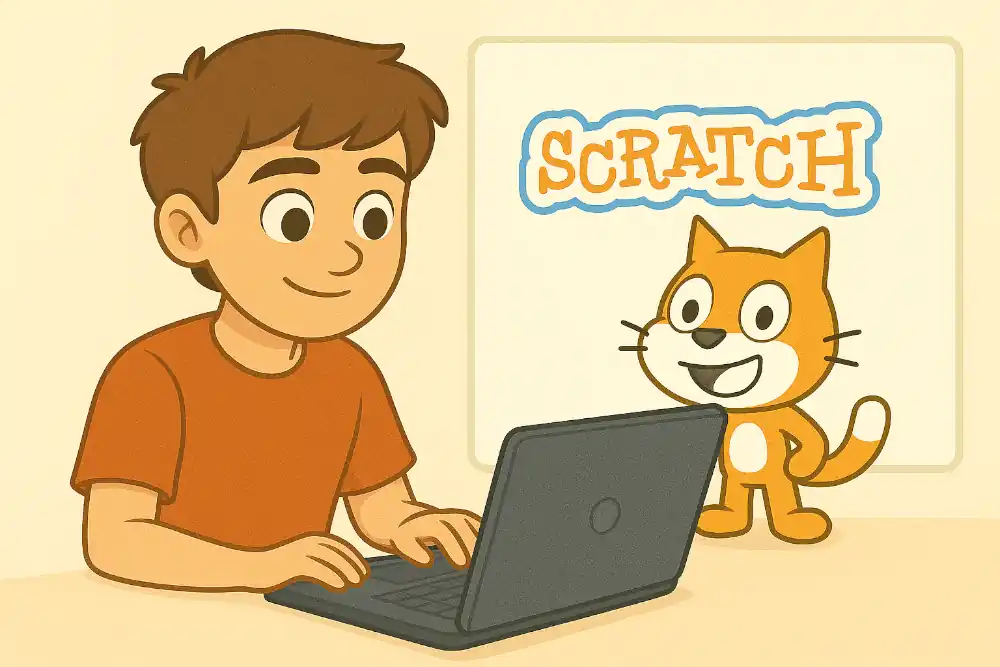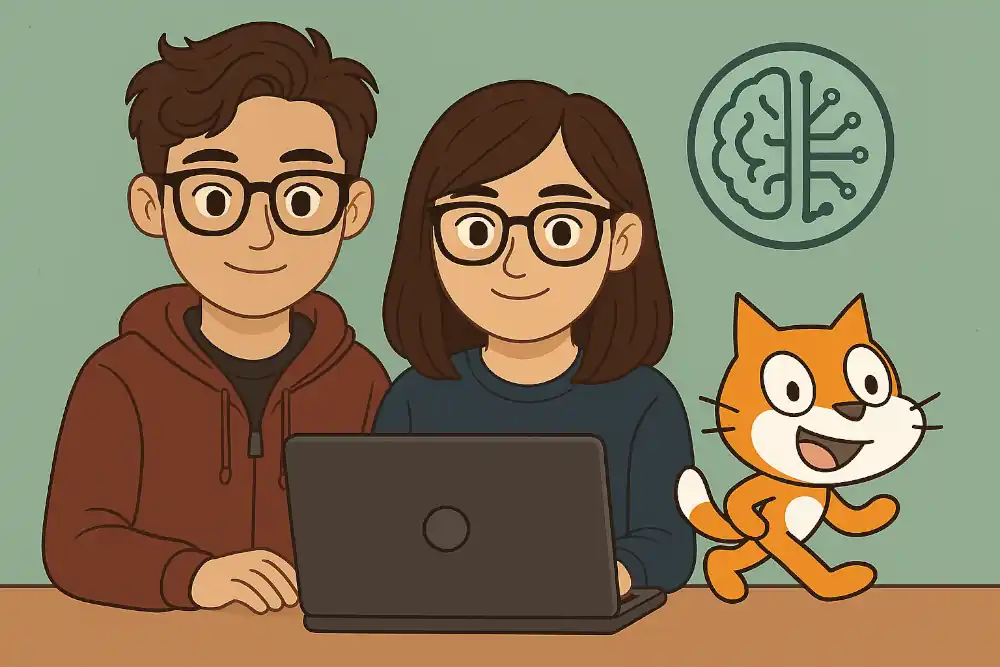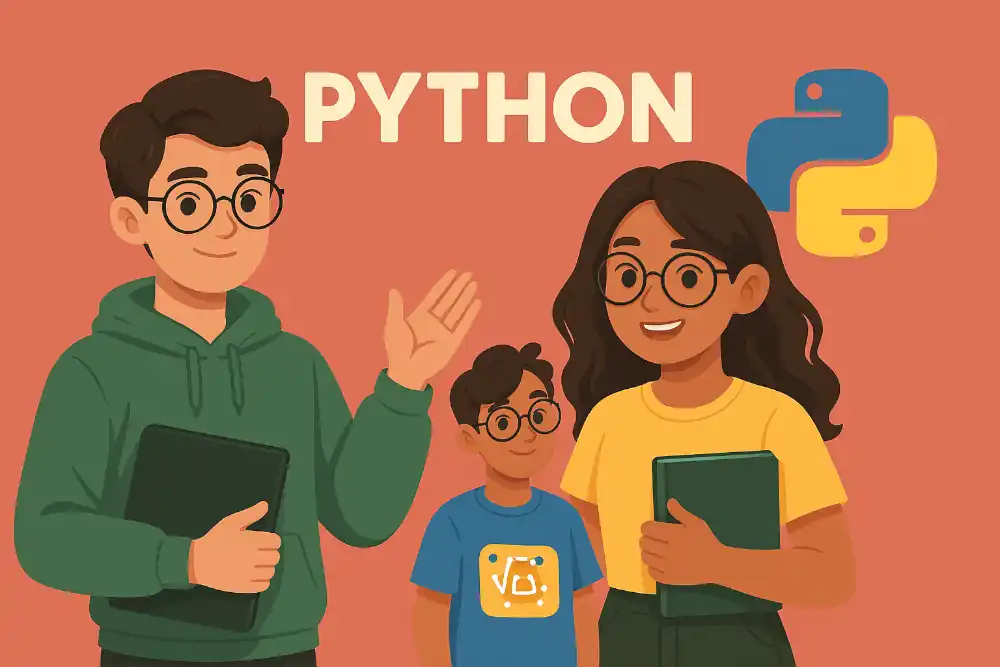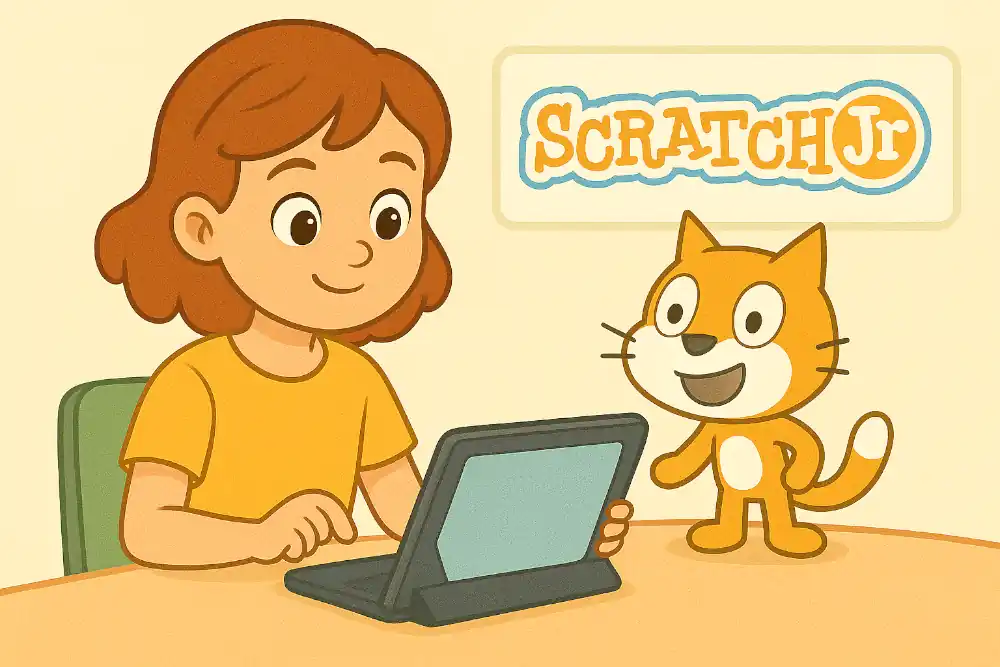Scratch is a block-based visual programming language developed in 2007 by the Massachusetts Institute of Technology (MIT) to help children and teenagers learn programming in a simple and creative way. The main goal was to create an environment where users could build games, animations, and interactive stories by dragging and dropping colorful blocks instead of writing complex code.

Scratch (8-16 years)
Programming with Scratch for Kids and Teens (Ages 8 to 16)
Scratch is a visual, block-based programming language created in 2007 by the MIT Media Lab. It was designed to teach the fundamentals of programming to children and teenagers in a fun and engaging way. Today, Scratch is one of the most popular platforms for introducing programming at early ages.
With Scratch, students can build exciting and useful projects—such as games, animations, interactive stories, and simple applications—without writing complex code. Instead, they use colorful blocks that snap together like puzzle pieces.
Educational Goals of the Scratch Course
- Teach fundamental programming concepts like loops, conditions, variables, and events
- Strengthen logical and algorithmic thinking
- Encourage creativity through hands-on projects
- Develop problem-solving skills
- Improve teamwork and collaboration
Age Groups and Course Levels
This course is offered in two main age categories:
| Age Group | Course Level | Types of Projects |
|---|---|---|
| 8–10 years | Beginner | Simple games, basic animations |
| 10–16 years | Intermediate/Advanced | Interactive games, complex stories, code challenges |
Skills Kids Will Learn
In this course, students learn various concepts through practical projects:
Programming Concepts:
- Motion and appearance blocks
- Conditional logic and loops
- Use of sound and graphics
- Defining and using variables
- Event handling and user interaction
Soft Skills:
- Confidence in problem-solving
- Teamwork on shared projects
- Project presentation and communication skills
Why Choose Scratch for Your Child?
- Friendly and engaging interface
- No prior coding experience required
- Approved by teachers and global educational institutions
- Developed by one of the world’s top universities (MIT)
- Safe online platform for kids
✨ Sample Projects in the Course:
- Build games like “Escape the Maze,” “Ball and Paddle,” and basic platformers
- Create fun or educational animations
- Design interactive stories with custom characters
- Simulate real-world projects like traffic lights or simple calculators
📝 Summary and Conclusion
The Scratch programming course is a fun, safe, and professional way for children to explore technology and coding. It not only enhances technical skills but also boosts creativity, critical thinking, and confidence. Scratch serves as a bridge to more advanced programming languages like Python or JavaScript and lays the foundation for a bright future in the world of technology.

In the Scratch course, children and teenagers aged 8 to 16—divided into two age groups, 8–10 and 10–16—become familiar with concepts such as loops, conditionals, variables, and events, while creating diverse and interactive projects. This learning environment promotes problem-solving, creativity, and teamwork skills, and lays a strong foundation for further programming.

